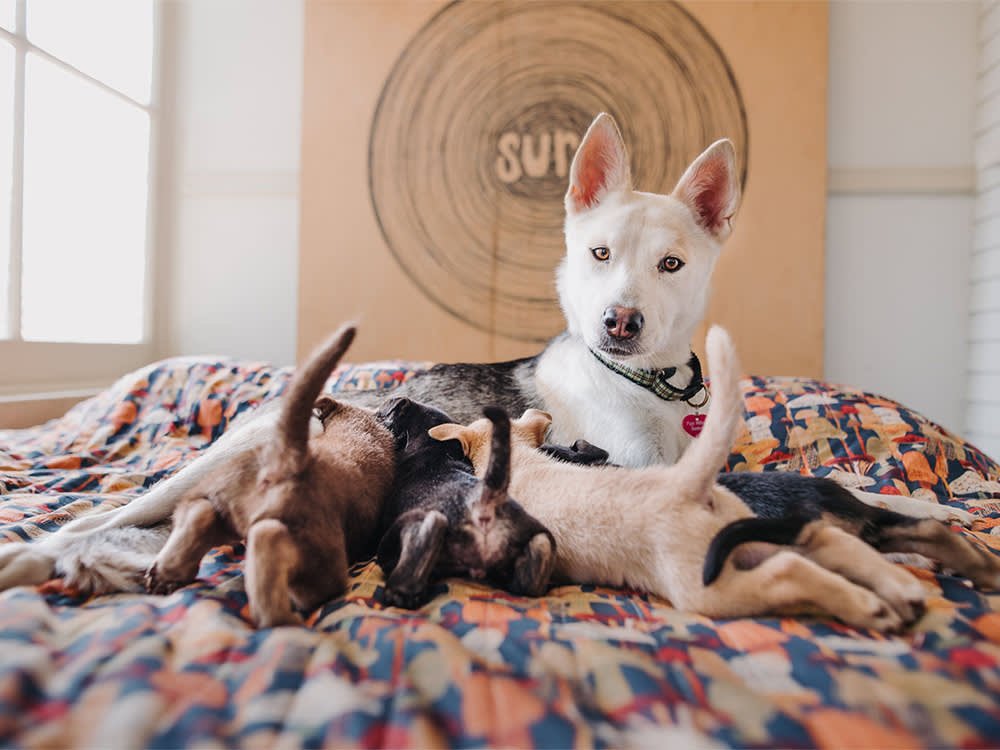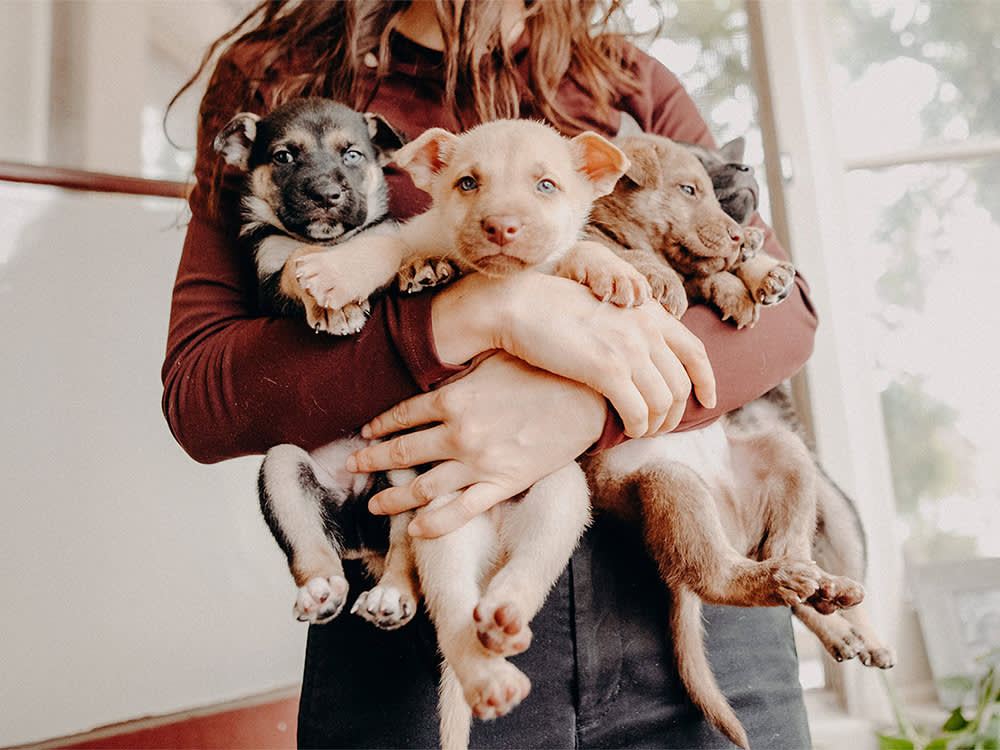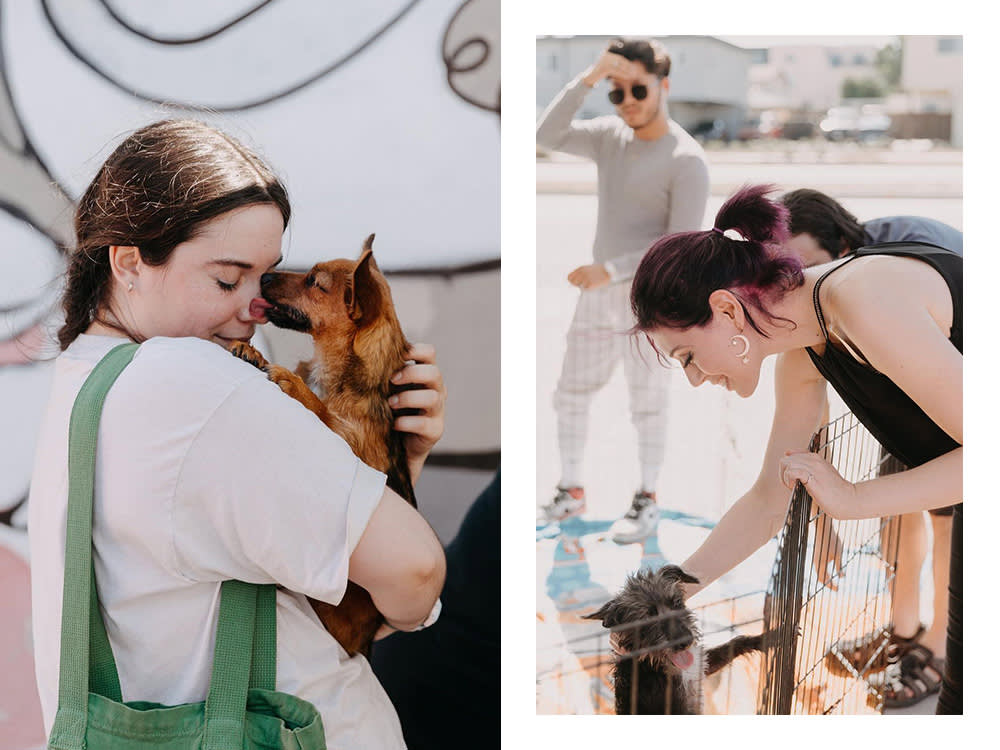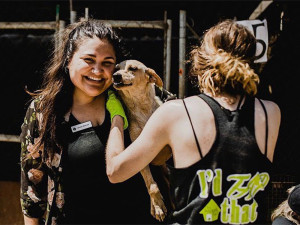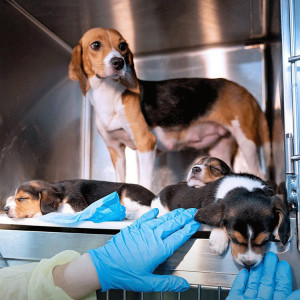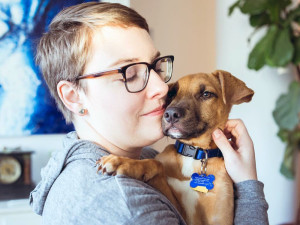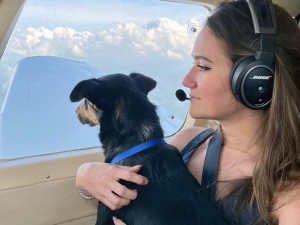Pups Without Borders: It All Started With a (Dog Named) Storm
Eve Bañuelos on how a pregnant dog and a pandemic layoff inspired her to start an organization that rescues dogs in California and Mexico as shelters overflow.
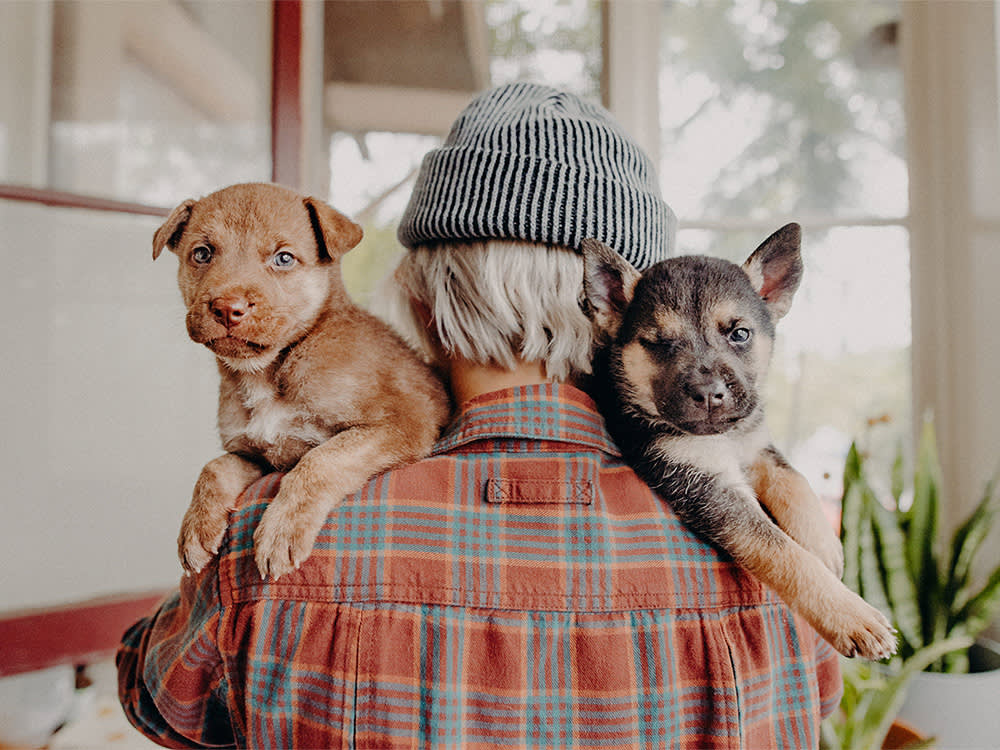
Share Article
What does it take for an animal rescue group to go from operating completely virtually to opening its first physical facility? That’s the question Pups Without Bordersopens in a new tab founder, Eve Bañuelos, has been answering this year. Finally, in October, she got the keys to the international rescue group’s brand new location in Los Angeles.
“I started this rescue by accident,” Bañuelos tells Kinship, describing her path from flute teacher to dog foster to the COVID-related layoff that led her to create and run her own rescue organization. After her layoff, Bañuelos fostered her first pregnant dog, a pup named Storm who’d been kicked out of her home in Tijuana, a Mexican city just three hours south of LA.

Save on the litter with color-changing tech that helps you better care for your cat.
Storm’s pregnancy was complicated by a transmissible venereal tumor (TVT), which brought concerns that it could affect the health of her litter. After doing some research, the risks were still unclear, so Bañuelos planned to get Storm a C-section — until one day, to everyone’s surprise, she began giving birth to her puppies. Storm’s litter was fostered out so she could have chemo to treat her tumor before it could get any bigger. “That was such a cool experience, and it just kind of kept happening,” Bañuelos says. “People would reach out to me when they had pregnant dogs or abandoned puppies.”
That outreach from LA organizations and people on the ground in Tijuana ultimately prompted Bañuelos to start Pups Without Borders (found here opens in a new tabon Instagram). By 2022, it has a staff of 10 and has rescued 2,000 dogs — many of whom have been pregnant, like Storm, or are recently abandoned puppies.
Was a focus on helping pregnant dogs what you originally had in mind?
It was kind of a weird dream I had to help one pregnant dog because I thought it would be a cool experience. I did enjoy it. There’s something about getting to support the mom through her pregnancy and giving birth and then watching the puppies grow. Now, it’s kind of what we’re known for. At this point, we do focus on pregnant dogs, but 80 percent of our dogs are just regular, good old-fashioned dogs who are seniors or more middle-aged or just dogs that are red-listed by the city shelter.
How did you end up helping dogs in Tijuana?
I have some friends and family who are in various parts of Mexico. And kind of by accident, I started supporting my ex-boyfriend’s mom, who was doing a little bit of rescuing right at the border of Arizona. That grew into her contacting me every other month when she was trying to transport dogs up here.
What resources do you need to do this work in Mexico?
There’s far less help in many parts of Mexico, whether from the actual people there or from American organizations...It is more challenging due to the distance itself. There are also regulations at the border, which is probably the worst part. Then, there is the issue of traveling safely in terms of vaccinesopens in a new tab and health. You have to ensure that the dog has been quarantined for a certain time. So, we have to keep track of what shots they’ve had and have places in Mexico for them to stay to receive all their shots.
We also have to have the resources and the connections for them to have a place to stay, and usually, that’s a paid foster. These are people whose job is to foster dogs for rescues, and they have a dedicated part of their house for it that they keep sanitized. They know what to look out foropens in a new tab in terms of the dogs’ health. Once it’s time, we arrange for a driver to pick them up from where they are and wait in the massively long line at the border, show the necessary documents, and then make the trip to LA When they’re in LA, we have a whole other process to make sure that they’re healthy.
How many of the dogs who Pups Without Borders works with are from Mexico versus California?
Today, I would say 50 percent are from Mexico, and 50 percent are from California. It used to be more like 95 percent from Mexico. We started during COVID when all the shelters were completely empty, and everything was fine. So many people were adopting [in the U.S.], while Mexico was having the opposite problem. There were no safeguards, so people were losing their jobs and then staying home with COVID or getting everyone else sick. People were dying, so the dogs ended up on the streets. That’s why we were there so much.
As things settled down here, that’s when we started seeing what we have now, which is the opposite effect. Now everyone is dumping their dogs, and no one’s adopting because everyone already adopted, and the shelters are overflowingopens in a new tab. At the same time, there is an unending supply of dogs in need of help in Mexico.
Pups Without Borders got access to its first physical facility in October. What are your plans for it?
The new facility is perfect for our needs. It used to be a small school, and then it was a sober living center. So it has a lot of rooms, which is great for having a lot of dogs. We’re thinking of putting some kennels in the big rooms for the dogs to sleep in. But generally, during the day, they can either be outside, going on walks, in their room, or in the large lobby area that’s going to be sectioned off for them, where we’ll have different groups of dogs out at different times. For the smaller rooms, we’re going to use three of those as nurseries for pregnant moms or nursing litters. We’re going to have a large media area where we want to host a lot of fundraising events because we have a high rent. But it’s worth it because we can house dogs that would otherwise die in the streets or get euthanized.
We’re getting a big TV donated, and we already have a bunch of furniture. We plan to host movie-watching events with puppies. Tickets are $25, plus we’ll have drinks, popcorn, and pizza. We plan to make it look all festive and bring all the puppies out so people can watch the movies with puppies crawling everywhere.
What challenges are Pups Without Borders facing in getting a new facility ready?
We’ve been really lucky that the community has been so supportive. We have made two trips to Home Depot, and those are the only expenses so far, which is so cool. We’ve gotten donations of couches, dressers, and chairs — even the mop we’re using was donated. That has been insanely important and a huge game-changer for us because we’re basically saving every cent we have for rent every month. That is going to be our biggest challenge. We’re a little scared, but I really think we can do it with these events that we’re going to have.
Plus, we’re planning to offer boarding at a low rate to other rescues. We know firsthand how hard it is when you have a foster emergency. Fosters are amazing and so important, and there are not enough. But you cannot rely on volunteers to house dogs 24/7 without complications. This is our backup, and we want it to be a backup for other rescues. Hopefully, people will keep supporting us. As long as we’re in business, we’re going to be a safe haven for dogs who have nowhere to go.

Courtney E. Smith
Courtney is a freelance writer and podcaster whose work has appeared in Esquire, Pitchfork, Eater, and more. Her prior work includes working as an editor and music critic for Refinery29 and CBS Radio. And she's the author of the essay collection Record Collecting for Girls. She lives in Dallas, Texas with her rescue dog, Casey, where they volunteer together with the SPCA’s foster program.
Related articles
![A woman smiling with a dog at an animal rescue service event.]() opens in a new tab
opens in a new tabAs Shelters Fill Up With Dogs, The Animal Pad Volunteers Roll Up Their Sleeves
The San Diego-based rescue’s 300 volunteers take saving Mexican street dogs as seriously as a full-time job (but have fun doing it).
![Four beagles placed in a rescue cage.]() opens in a new tab
opens in a new tab4,000 Beagles Rescued From a Research Facility Need Homes
It’s one paw in front of the other for these dogs as they adjust to life in safe homes.
![Short-haired blonde woman with glasses holding a mixed brown puppy close to her face affectionately]() opens in a new tab
opens in a new tabAt Badass Rescue, You Can Get a Private Concert From Joni Mitchell
In barks. She’s a dog. Was that not clear?
![A brunette woman holding a black dog with a blue collar, she is wearing headphones and a microphone attachment while seated in a plane with the clouds and sky showing through the window]() opens in a new tab
opens in a new tabPilots to the Rescue Has Flown Nearly 400 Animals to Safety This Year
With the help of flight, this nonprofit is saving animals and relocating them to loving homes across the country.
